
-
Zoe Lees/WHYY
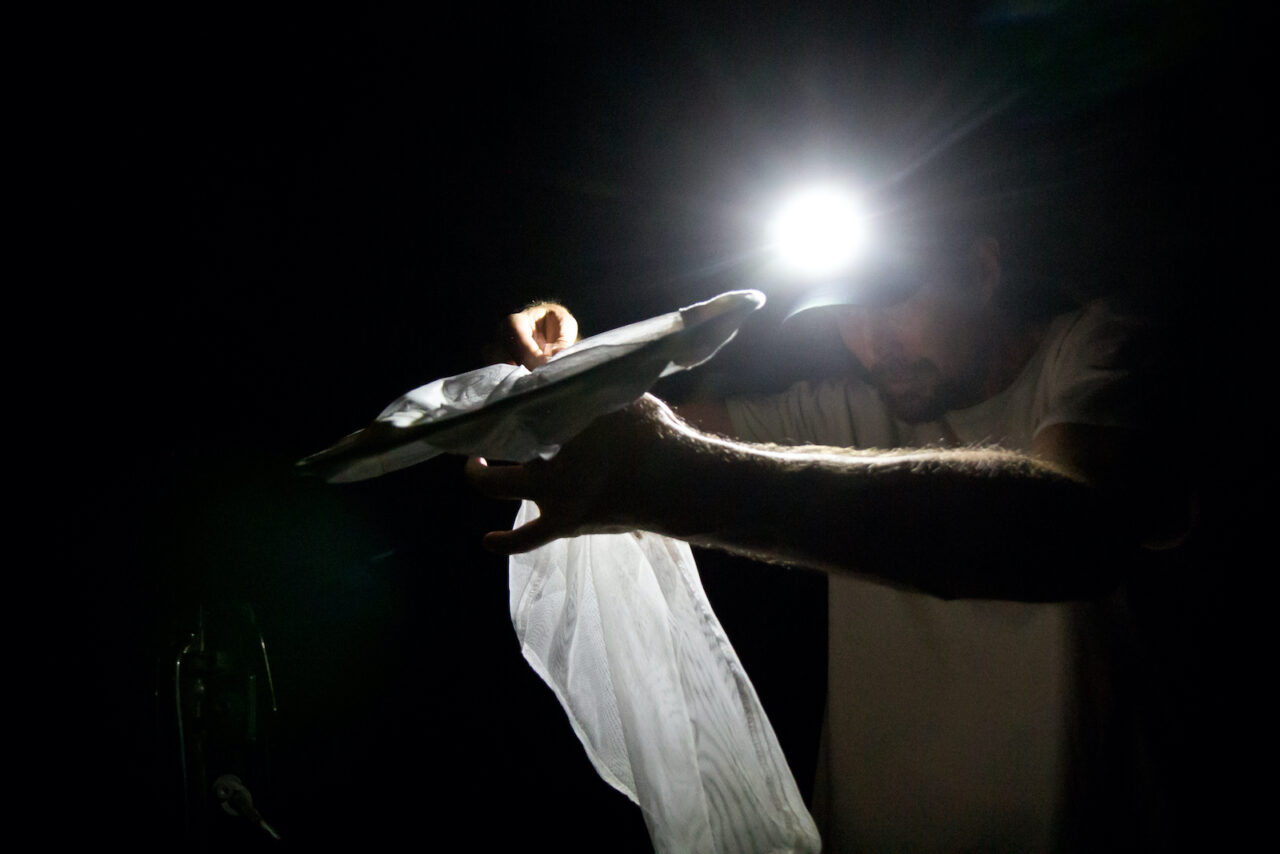
Kimberly Paynter / WHYY
After wildlife biologist Jason Davis catches a firefly that he believes is Photuris bethaniensis, he returns to his truck to try to confirm he’s right. (Kimberly Paynter/WHYY)
Three years after a worker drove a van through a wetland area north of Bethany Beach, tire tracks remain in the vegetation.
This may not be much of a problem for the average person, but the printout illustrates how human action can have long-term effects on the habitats on which species depend.
That includes the state-endangered Bethany Beach firefly (Photuris bethaniensis) — a species found primarily along the southern Delaware coastline. (The firefly was thought to be endemic to Bethany until it was found last year in Assateague, Maryland.
Threatened by development and other factors, conservationists are trying to protect this rare insect from extinction. Environmental groups have urged the U.S. Fish & Wildlife Service to include it under the Endangered Species Act, which would give the species greater protection.
“When you talk to people about fireflies, it’s not the same reaction you get when you talk about cockroaches, crickets, or ants,” said Jason Davis, a wildlife biologist with the Delaware Environmental Department who has studied the Bethany Beach firefly for the stands since 2019.
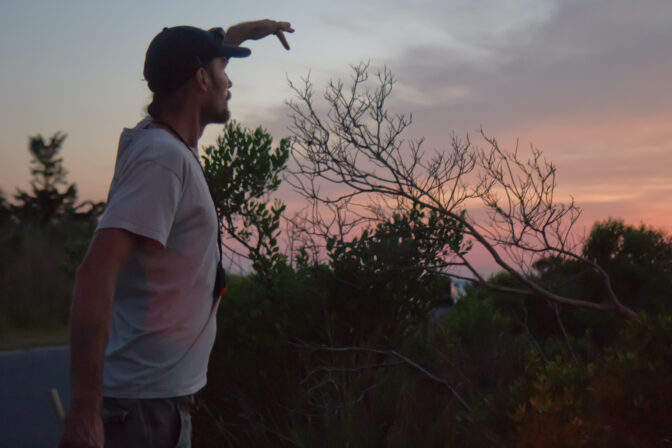
Kimberly Paynter / WHYY
Shortly after sunset, wildlife biologist Jason Davis looks for emerging photuris bethaniensis, also known as the Bethany Beach firefly, in the swamps adjacent to Southern Delaware’s Rehoboth Bay. (Kimberly Paynter/WHYY)
“You can talk about any insect, but when you talk about fireflies, a lot of people’s eyes light up, and it takes them back to when they were kids, when there were more fireflies.”
On a Friday night, just after sunset, Davis risks mosquito bites to look for the elusive firefly among the wetlands that leave those tire tracks.
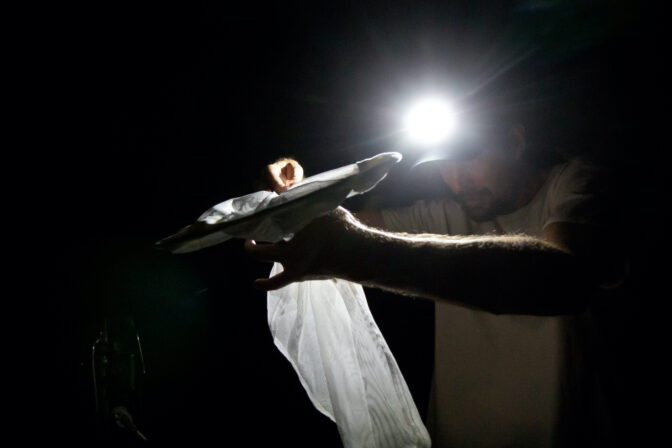
Kimberly Paynter / WHYY
After wildlife biologist Jason Davis catches a firefly that he believes is Photuris bethaniensis, he returns to his truck to try to confirm he’s right. (Kimberly Paynter/WHYY)
Insect net in tow, he’s looking for a bright green double flash – that’s what sets the Bethany Beach firefly apart from other flying beetles.
“Sometimes it’s a mystery. Is it left or right? How far will it fly?” says Davis. “Often you swing your net and there’s nothing.”
He’s lucky tonight. He walks to the vegetation, takes down his net and catches a firefly. His work here will help determine what conservation efforts are needed to save the insect.
The Center for Biological Diversity petitioned the US Fish & Wildlife Service in 2019 to include the Bethany Beach firefly, among other endangered species, in the Endangered Species Act. After the nonprofit sued the agency for its alleged slow response to the petition, Fish & Wildlife agreed this spring to make a decision on whether or not to include the Bethany Beach firefly by October 2023.
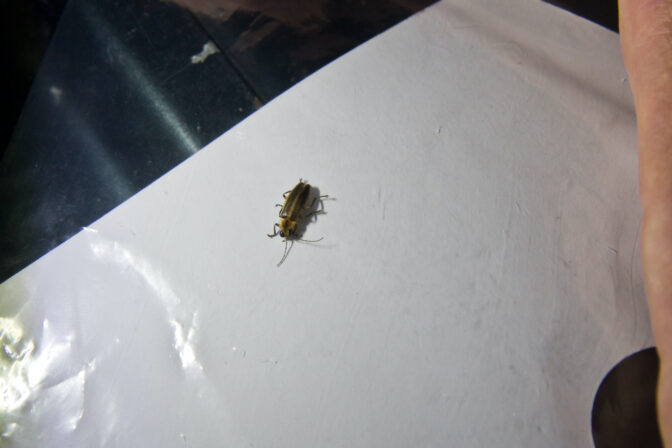
Kimberly Paynter / WHYY
A rare Photuris bethaniensis, known as the Bethany Firefly, caught by Jason Davis who is researching the species along the coast of Southern Delaware. (Kimberly Paynter/WHYY)
That would allow the agency to work with developers to ensure their projects don’t threaten the fireflies, according to Noah Greenwald of the Center for Biological Diversity.
Losing the firefly, he says, would mean losing “a little bit of what’s unique about Bethany Beach and that little corner of Delaware.”
“Scientists around the world are sounding the alarm that we are in an extinction crisis,” Greenwald said. “We risk losing more than a million species in the coming decades. And the Bethany Beach firefly is part of that.”
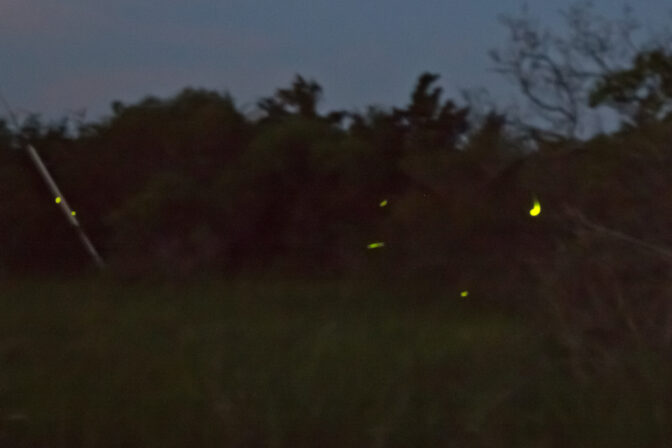
Kimberly Paynter / WHYY
The first flashes of fireflies emerging from the swamps along Rehoboth Bay begin shortly after sunset. (Kimberly Paynter/WHYY)
The insects are rare because they live among unusual small freshwater depressions that line the dunes of the Atlantic coast and are home to rare plant species. Most wetlands in North America are saline or brackish, because they are so close to the ocean – what is unusual about Bethany is that the wetlands are fresh water.
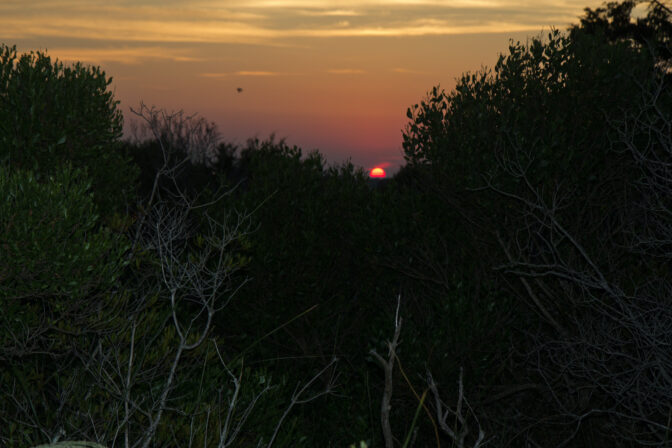
Kimberly Paynter / WHYY
After the sun sets over southern Delaware’s Rehoboth Bay, fireflies will emerge from adjacent swamps. (Kimberly Paynter/WHYY)
“We only see a few adults here and there, which is very disturbing because that shows that the species is in very low numbers,” said Kitt Heckscher, a professor of environmental science at Delaware State University.
In the late 1990s, while still working for the state, Heckscher received a scholarship to search for the firefly. Previously, the insect had not been seen since the 1950s, after DuPont chemist Frank McDermott discovered it in 1951. Davis is the first to investigate the Bethany Beach firefly in about 20 years.
Most of the wetland habitats that Bethany Beach’s fireflies depend on have been lost to coastal development, Heckscher says, including those known to have Bethany Beach fireflies.
“Everything outside of the parks has pretty much been destroyed in terms of sensitive wetlands and things like that in the dunes,” he says.

Kimberly Paynter / WHYY
A beach house is being built along Coastal Route 1, south of Dewey Beach. (Kimberly Paynter/WHYY)
Development not only depletes habitat, but also brings light pollution and lowers groundwater in dune areas that can dry up wetlands, he explains.
He adds that if the fireflies aren’t in good shape, neither are the wetlands — which also affects other plants and animals that depend on them.
Fireflies on Bethany Beach are also threatened by sea level rise and invasive species.
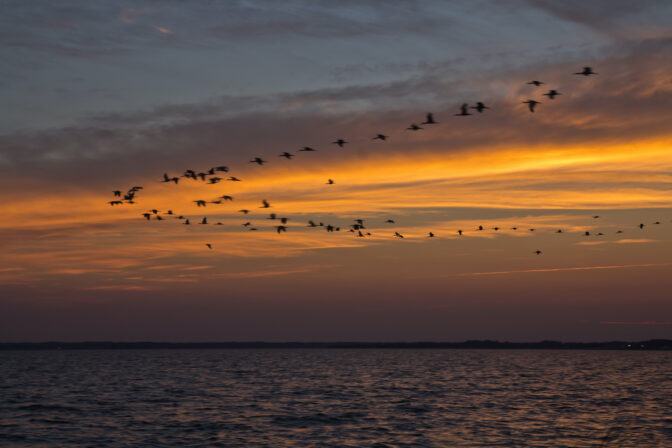
Kimberly Paynter / WHYY
Sunset along Rehoboth Bay in Southern Delaware. (Kimberly Paynter/WHYY)
At the end of his investigation, Davis returns to his truck. In its net, the captured firefly flickers like a fire alarm light. Davis confirms that it is indeed a Bethany Beach firefly and releases it after collecting his data.
Davis suspects that most of the residents of Bethany don’t know they have their own kind of firefly, but feels they have to save it.
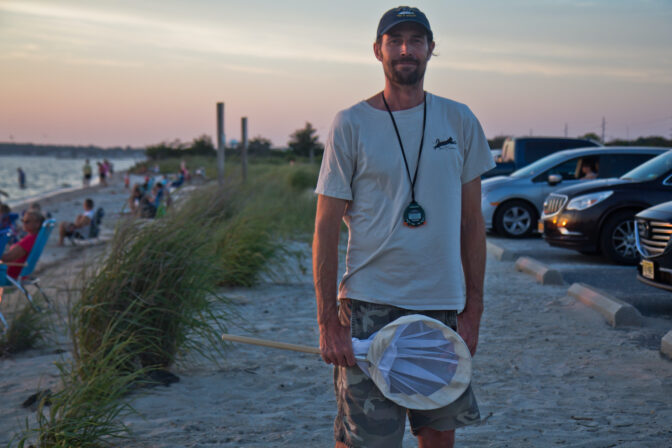
Kimberly Paynter / WHYY
Wildlife biologist Jason Davis is conducting a study on Photuris bethaniensis, also known as the Bethany Beach firefly, whose habitat is in the wetlands of the southern Delaware shoreline. He waits until dark along Rehoboth Bay before he can collect and identify the rare firefly. (Kimberly Paynter/WHYY)
“I like to know that there is all this biodiversity in nature and that we are doing something about it. But once you lose something, you almost feel like a part of yourself is lost because we’re all part of nature,” Davis says.
And children, he adds, “should be connected to nature.”
“My kids love running around the yard with the net and catching fireflies. And it warms my heart to see that.”

Comments
Post a Comment